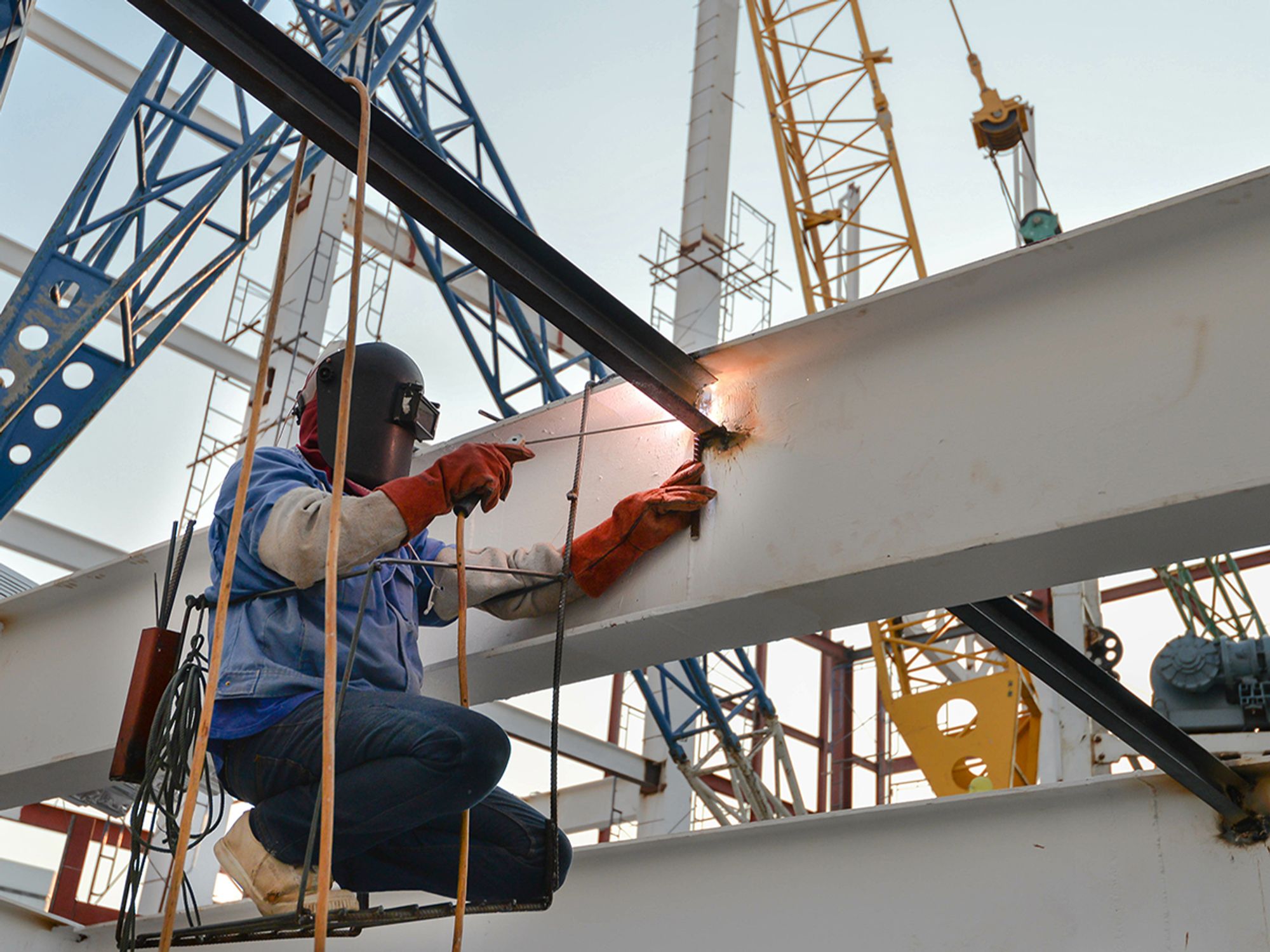Requirements for the construction industry

- OSHA’s requirements for hot work in the construction industry are similar but not identical to those for general industry.
- Construction employers must provide training in safe welding practices, handling toxic and flammable substances, fire watching, and confined spaces, as applicable to their workers’ duties.
Welding, cutting, and brazing are common in many fields. The Occupational Safety & Health Administration (OSHA) regulates these practices in the construction industry in 29 CFR 1926 Subpart J.
Most requirements for hot work in construction are the same as those in general industry. However, there are some differences, such as whether gas cylinders may be permanently stored on a transport dolly. OSHA says that due to the rougher nature of most construction sites, cylinders must be put into more secure storage if gas is not to be drawn for 24 hours.
Regulations
OSHA’s Subpart J welding requirements apply to any employer performing welding operations during construction activities.
- 29 CFR 1926 — Safety and health regulations for construction.
- 29 CFR 1926, Subpart J — Welding and cutting.
- 29 CFR 1926.350 — Gas welding and cutting.
- 29 CFR 1926.351 — Arc welding and cutting.
- 29 CFR 1926.352 — Fire prevention.
- 29 CFR 1926.353 — Ventilation and protection in welding, cutting, and heating.
- 29 CFR 1926.354 — Welding, cutting, and heating in way of preservative coatings.
General requirements
Construction employers must:
- Provide personal protective equipment (PPE) as needed,
- Provide suitable ventilation,
- Ensure workers’ safety when working in confined spaces,
- Follow safety precautions for fire prevention and protection,
- Maintain suitable fire extinguishers,
- Provide a fire watch where required,
- Maintain welding equipment,
- Ensure proper marking of welding materials and equipment,
- Handle welding materials and equipment properly, and
- Facilitate and enforce proper welding procedures.
Training
Training requirements for welding and cutting that are specific to construction are found in 29 CFR 1926.350, .351, .352, and .354.
Several OSHA regulations apply to training for hot work in the construction industry.
- 1926.350–351 requires gas and arc welders to be trained in the safe use of fuel gas and safe means of arc welding and cutting.
- 1926.352 requires employees assigned to guard against fire during hot work (fire watchers) to be trained in the anticipated fire hazards and the use of the provided firefighting equipment.
- 1926.354 requires a competent person to be trained in how to test surfaces covered by a preservative coating for flammability before welding, cutting, or heating is started.
- 1926.59 requires employers to provide hazard communication training about materials that produce fumes and gases and work areas where such exposure may occur.
- 1926.21 requires employees to be trained in:
- Recognizing and avoiding unsafe conditions;
- Any regulations that apply to controlling or eliminating hazards in their work environment;
- Safe handling and use of any harmful or flammable substances they may be exposed to;
- The potential hazards, personal hygiene, and personal protective measures required; and
- The specific requirements in subparts D, F, and other applicable subparts of 29 CFR 1926.
The Welding and Cutting Standard, 29 CFR 1926 Subpart J, does not call for employees to receive training on the health hazards of welding-related fumes and gases. However, 1926.353 requirements lend themselves to training. Welders should be trained to:
- Use and maintain any required air line respirators, filter-type respirators, and other PPE; and
- Properly use the appropriate ventilation system for the job.
Workers who are potentially exposed to toxic and hazardous substances (like cadmium, hexavalent chromium, and lead) specifically regulated at 29 CFR 1926 Subparts D or Z may have further training requirements.
In addition, workers whose activities are regulated by the Confined Spaces in Construction Standard, 29 CFR 1926 Subpart CC, must be provided with training so that they understand the hazards in the permit space and the methods used to isolate, control, or in other ways stay safe from these hazards.
